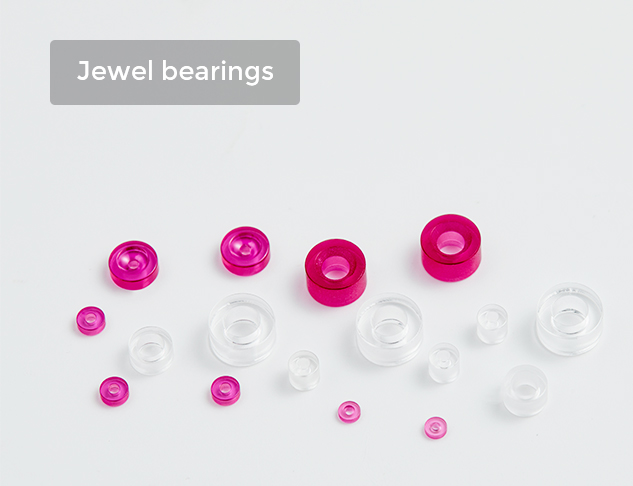By jjprecisionparts | 19 September 2023 | 0 Comments
The Beauty and Functionality of Watch Jewels
Have you ever stopped to think about the intricate details that make up a watch? One of the key components of a watch's functionality and appearance are watch jewels. These small, often overlooked gems play a crucial role in the precision timing and accuracy of watches. In this blog post, we will go over the different types of watch jewels, their applications, and why they are so important.

There are various types of watch jewels, each with their own purposes. Cup jewels are used to cover the pivot point of the balance wheel, reducing friction and providing stability. Hole jewels are inserted into the plate for the pivot of the escape wheel and balance staff. Orifice jewels, on the other hand, are placed in the oil sink to provide a precise amount of oil. Ball jewels are used in the winding system to distribute the force of the spring evenly. Assembled jewels are multiple jewel components combined for a specific function. Jewel balls and hemispheres, on the other hand, are used in the regulating system for smooth, non-frictional movement. Lastly, jewel valves are used in certain watches for precision flow control.
Watch jewels are vital in numerous applications, especially in measurement instruments. They are used in water and electricity meters, as well as dial indicators, gauges, and micrometers for their accuracy. Ultra-high pressure water jets and ink jet printing also employ the use of jewel valves for precise control. Jewel rods are used in the laser industry, while gyros and compasses utilize jewel bearings for their non-frictional movement. Ohmmeters, voltmeters, and other indicating meters, timers, and relays also rely on jewel bearings for smooth and accurate readings.
It is important to note that not all watch jewels are created equally. The most durable and scratch-resistant watch jewels are made of sapphire, while ruby and garnet are also commonly used. These materials are hard enough to withstand wear and tear, making them ideal for constant movement and friction.
In conclusion, the beauty and functionality of watch jewels are often overlooked but are critical to the accuracy and precision of watches and measurement instruments. Understanding the role of different types of watch jewels and their applications can give us a newfound appreciation for the intricacies that make up a simple watch. Should you need any watch jewels or precision parts for your instruments, contact us at Tel: 0086-137-7601-7418 or E-mail: sales@jjprecisionparts.com. Rest assured, we will provide you with high-quality parts that will help your instruments function at their best.

There are various types of watch jewels, each with their own purposes. Cup jewels are used to cover the pivot point of the balance wheel, reducing friction and providing stability. Hole jewels are inserted into the plate for the pivot of the escape wheel and balance staff. Orifice jewels, on the other hand, are placed in the oil sink to provide a precise amount of oil. Ball jewels are used in the winding system to distribute the force of the spring evenly. Assembled jewels are multiple jewel components combined for a specific function. Jewel balls and hemispheres, on the other hand, are used in the regulating system for smooth, non-frictional movement. Lastly, jewel valves are used in certain watches for precision flow control.
Watch jewels are vital in numerous applications, especially in measurement instruments. They are used in water and electricity meters, as well as dial indicators, gauges, and micrometers for their accuracy. Ultra-high pressure water jets and ink jet printing also employ the use of jewel valves for precise control. Jewel rods are used in the laser industry, while gyros and compasses utilize jewel bearings for their non-frictional movement. Ohmmeters, voltmeters, and other indicating meters, timers, and relays also rely on jewel bearings for smooth and accurate readings.
It is important to note that not all watch jewels are created equally. The most durable and scratch-resistant watch jewels are made of sapphire, while ruby and garnet are also commonly used. These materials are hard enough to withstand wear and tear, making them ideal for constant movement and friction.
In conclusion, the beauty and functionality of watch jewels are often overlooked but are critical to the accuracy and precision of watches and measurement instruments. Understanding the role of different types of watch jewels and their applications can give us a newfound appreciation for the intricacies that make up a simple watch. Should you need any watch jewels or precision parts for your instruments, contact us at Tel: 0086-137-7601-7418 or E-mail: sales@jjprecisionparts.com. Rest assured, we will provide you with high-quality parts that will help your instruments function at their best.
Leave a Reply
Your email address will not be published.Required fields are marked. *
POPULAR BLOG
CATEGORIES
TAGS